16114
Image
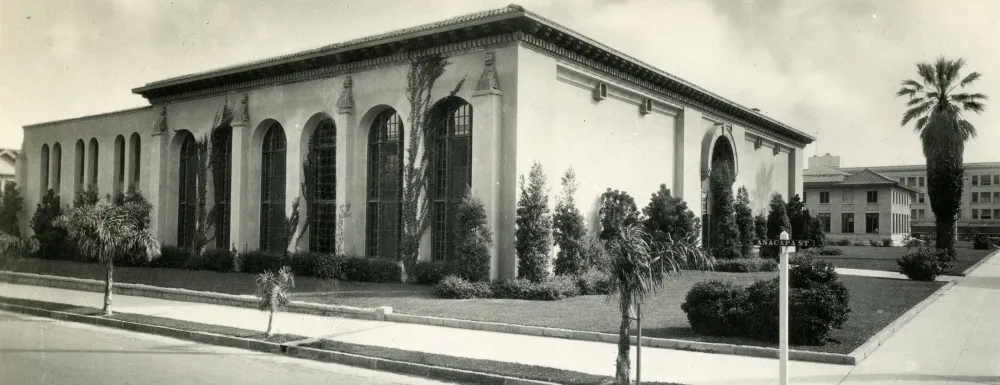
Title
Library History
Sections

Over the years, the Central Library has undergone a number of building renovations, including a major remodel completed by Jerry A. Zimmer (1980) and the new Children’s Library Project (2015), which expanded the Children’s Library from 1,500 to over 6,000 square feet.
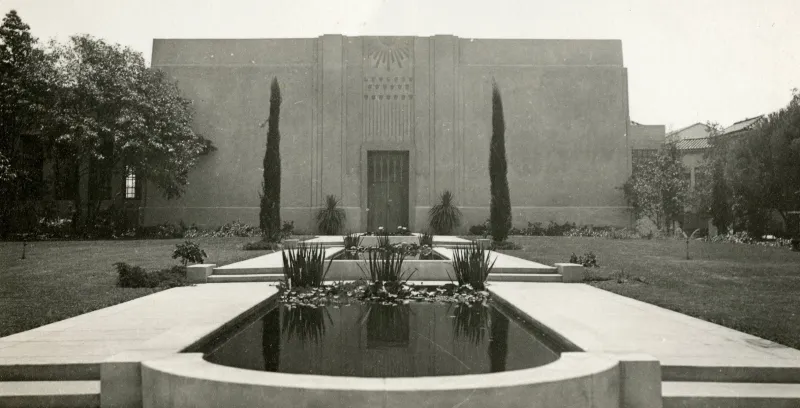
The Michael Towbes Library Plaza, the library’s most recent capital project, creates 10,000 square feet of programmable space between the Library and the Museum of Art. Located in the heart of Santa Barbara’s Cultural Arts District, the Library Plaza’s renovation was inspired by original architectural elements of the Central Library (designed by architect Francis Wilson and opened in 1917) and the Faulkner Memorial Art Gallery (designed by Myron Hunt and opened in 1930). The Egyptian Sunburst Poppies design above the exterior doors of the Faulkner Gallery, first created by California landscape artist John Gamble, has been restored to its original grandeur. The three historic reflecting ponds in the Plaza’s original 1930 design, are creatively and sustainably reimagined through two travertine mosaics and a pond-shaped planter that flow outward from the Faulkner Gallery toward Anapamu Street.

The Faulkner Gallery, also recently renovated with new carpet and painted walls, known for featuring exhibitions by community artists groups such as the Oak Group, Santa Barbara Art Association, and Fiber Arts Guild, once showcased artworks from Pablo Picasso, Georgia O’Keefe, “The Blue Four” exhibition in 1932 (Feininger, Kandinsky, Jawlensky, and Klee), and Alfredo Ramos Martínez.
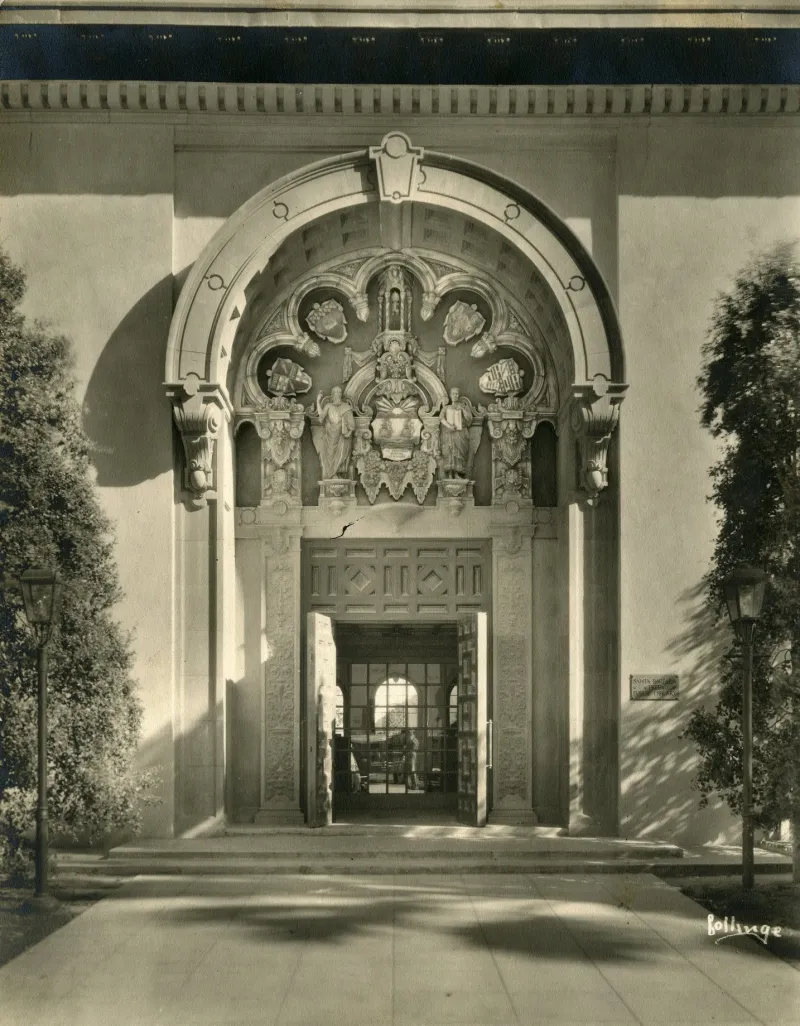
The Central Library’s Historic Main Entrance (corner of Anapamu and Anacapa) has also been revitalized. The Tympanum Archway has been refurbished and a new programming space, Storytime Square, features a stone patio, fresh landscaping, and California native trees.
1882 - Santa Barbara Free Public Library established.
1892 - First Santa Barbara Public Library opens at 14 E. Carrillo St.; designed by Peter J. Barber.
1910 - SBPL Library Director, Frances Burns Linn, establishes California’s first County Branch Library System.
1911 - Montecito Library established.
1914 - Santa Barbara receives $50,000 Carnegie Grant for new Central Library on the corner of Anacapa & Anapamu.
1916 - Central Library ground-breaking ceremony, September 25.
1917 - Central Library opens to the public, August 27.
1924 - Wood-carved tympanum installed over Main Entrance; designed by Carleton Winslow.
1925 - Santa Barbara Earthquake, June 29.
1930 - Faulkner Memorial Art Gallery opens, October 15; designed by Myron Hunt.
1952 - Friends of the Santa Barbara Public Library established.
1973 - Eastside Library opens.
1980 - Major building remodel; designed by Jerry Zimmer. Old Main Entrance closed.
2012 - Central Library designated Historic Landmark.
2012 - Santa Barbara Public Library Foundation established.
2015 - New Children's Library opens.
2022 - Groundbreaking for Michael Towbes Library Plaza.
2024 - Michael Towbes Library Plaza opens.
Miss Sara Plummer established the City's first library on State Street in 1871. When Miss Plummer married and left the city, the library was sold to the Odd Fellows and moved to their lodge at State and Haley Streets. The library became public and free when the Odd Fellows donated their collection of about 2,000 volumes to the City after the enactment of the California Municipal Library Law by the State Legislature in 1880.
As both the library and the city of Santa Barbara continued to grow, the library moved several times over the following decades. In 1892, a new building was constructed at 14 East Carrillo Street, and was later remodeled in 1908.
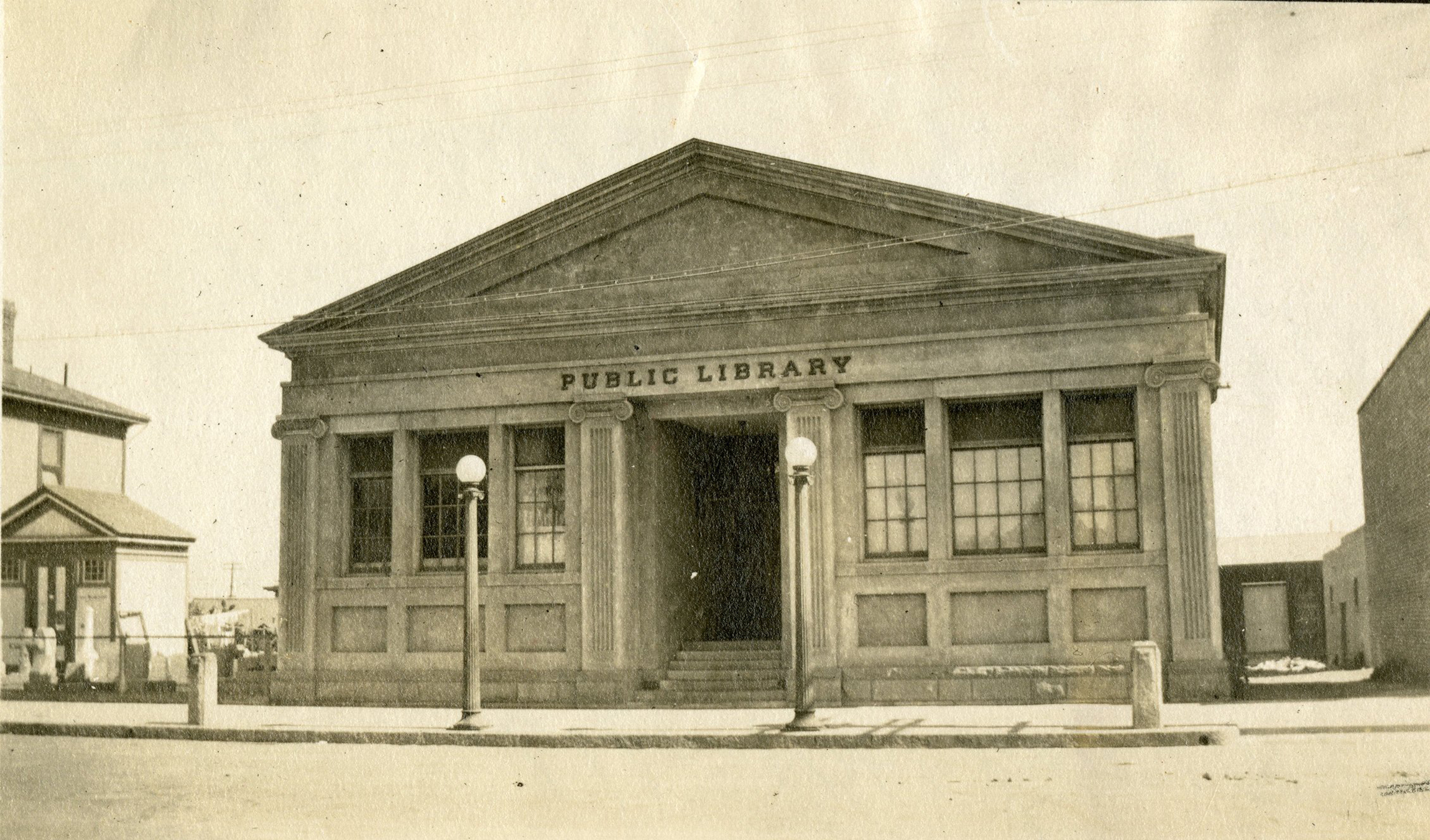
Mrs. Frances Burns Linn served as the Library Directory for the Santa Barbara Public Library from 1906 - 1943. Mrs. Linn oversaw the Santa Barbara Public Library during a rapid period of growth for the city. It was apparent by 1914 that the library needed a larger building to continue serving the Santa Barbara community.
With the aid of a grant from the Carnegie Foundation, the City broke ground on a new library at Anapamu and Anacapa Streets in September 1916. The building was designed by Pittsburgh architect Henry Hornbostel, with revised plans by local architect Francis Wilson. The Central Library opened to the public in August 1917.
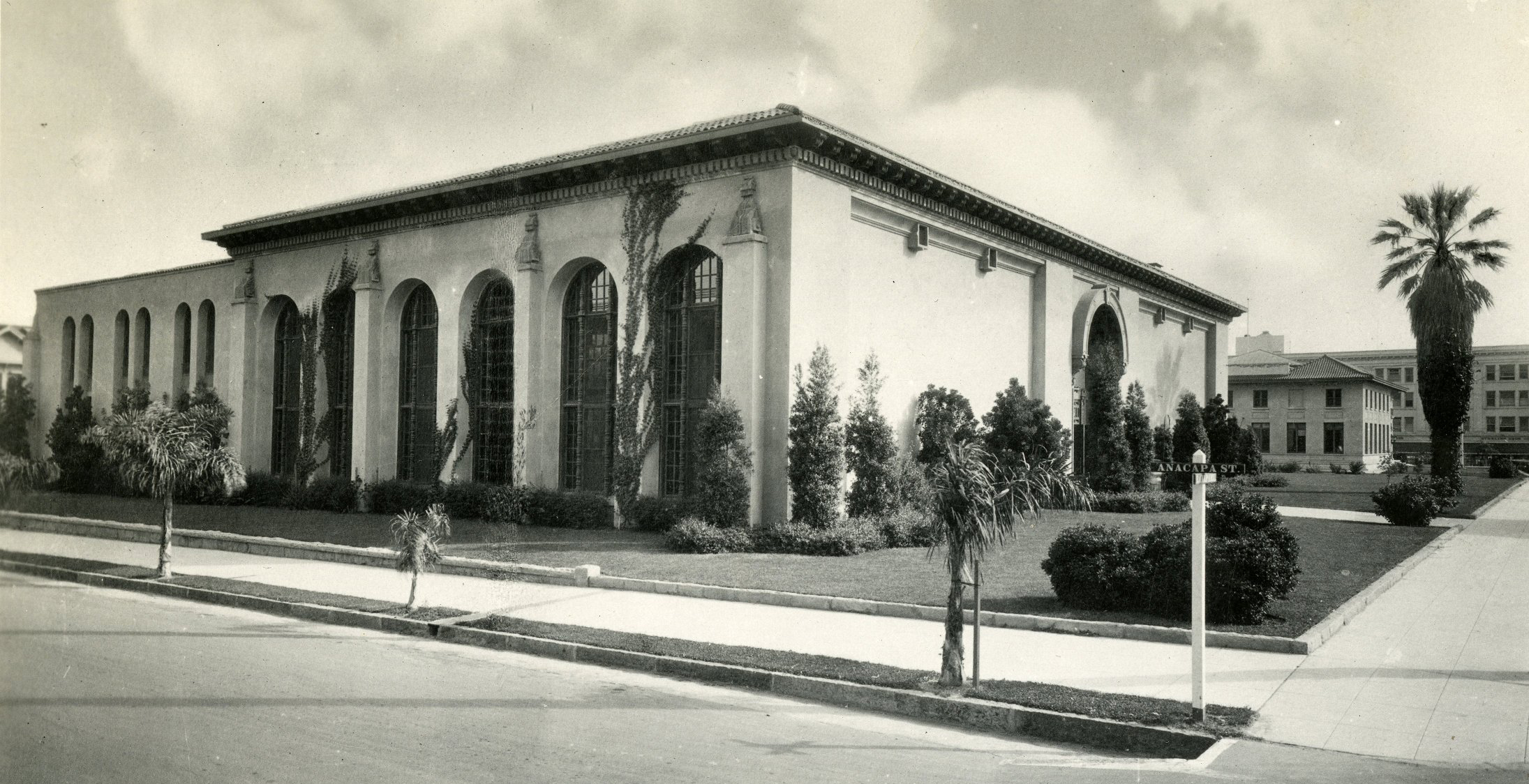
On June 29, 1925, the library sustained major damage in an earthquake. The Library's west wall collapsed, as did a portion of the east wall. Fortunately, the structure was deemed salvageable and reconstruction efforts were set underway led by architect Carleton Winslow. The Central Library reopened in the fall of 1926.
The Faulkner Memorial Art Gallery, designed by architect Myron Hunt, and built with the assistance of funds donated by Mary Faulkner Gould and land donated by Clarence Black, was completed in October 1930. It was named in the memory of Mary’s sisters, the Misses Emily, Abby, and Ann Faulkner.
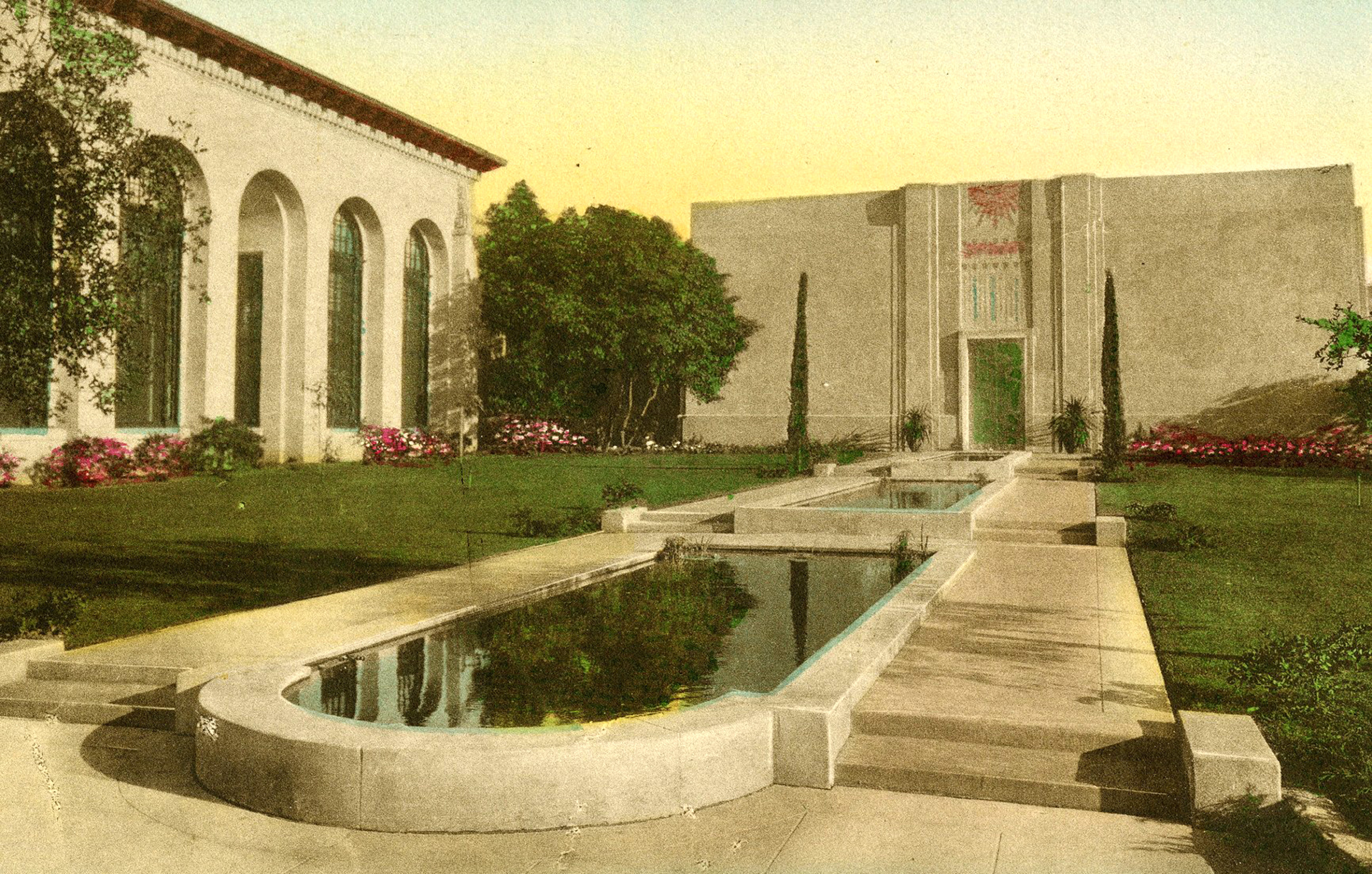
Through the early 20th century the Santa Barbara Public Library not only served the community of Santa Barbara, but the State of California. In 1910 Santa Barbara county was the first to organize a county library system under the newly-enacted California County Free Library Law. The Library had been serving remote communities, construction camps (like at Gibraltar Dam), and oil leases by service of traveling libraries. The first stations in Santa Barbara County were located in: Carpinteria, Summerland, Montecito, Goleta, Naples, Santa Ynez, Los Alamos, Los Olivos, Lompoc, Betteravia, Orcutt, Pinal, and Santa Maria.
The Santa Barbara Public Library Archives are housed at UCSB's Davidson Library Special Research Collections. A finding guide to the collection can be found here:
40 East Anapamu Street
Santa Barbara, CA 93101
805-962-7653

